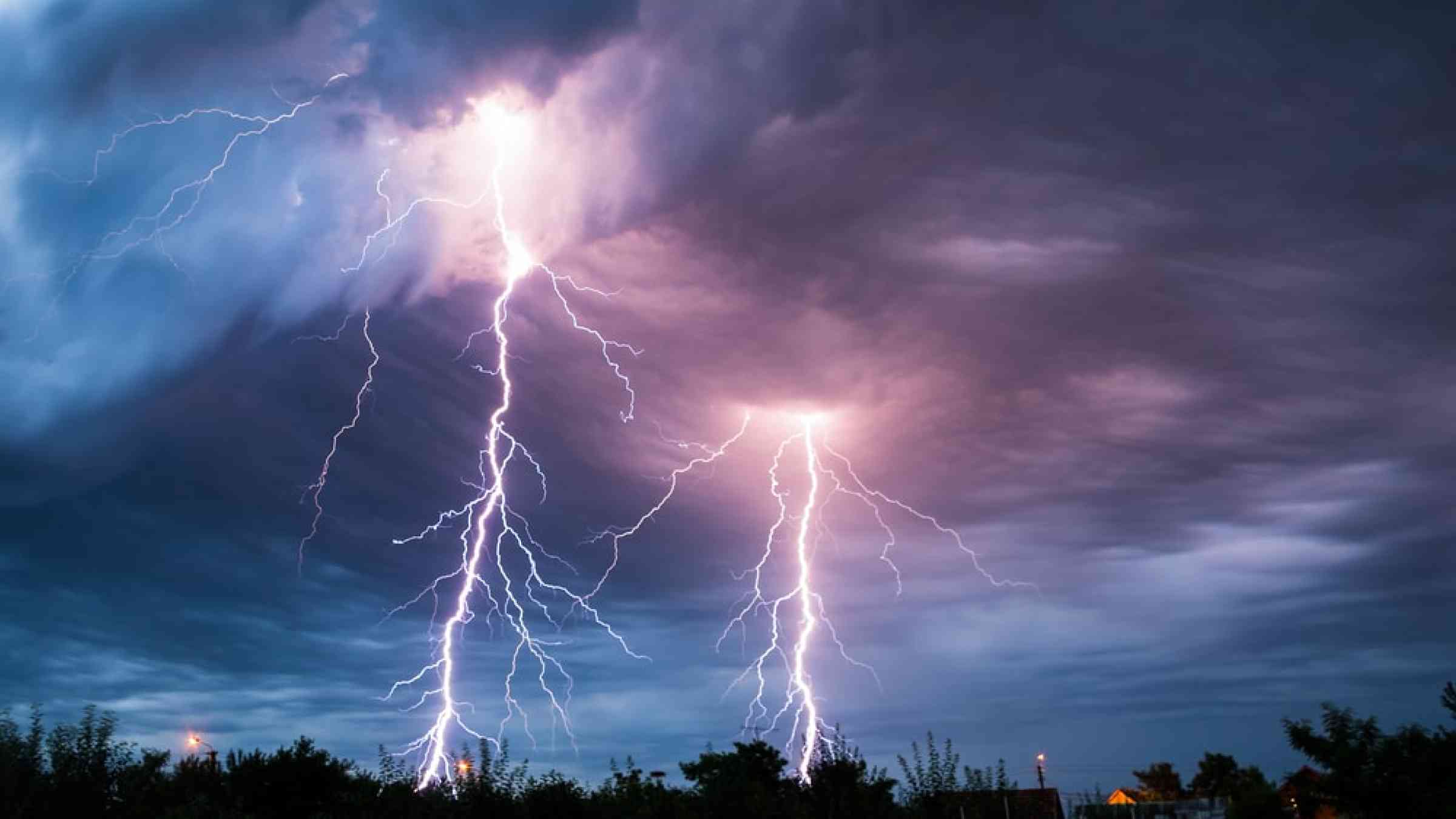Lightning-caused wildfires are 80 percent more likely under dry vegetation

Mimicking a randomized control trial of wildfires, scientists use satellites to uncover the key role of vegetation dryness in wildfire risk, aiding wildfire management and preparedness in California.
When fires in Quebec blanketed much of the eastern United States and Canada with thick smoke in June 2023, many of us wondered: what’s causing these wildfires? While lightning strikes ignite half of all wildfires in Canada, it is not well understood how environmental conditions influence this.
Wildfires are complex phenomena and can occur under a range of conditions, making it difficult to determine how different drivers affect wildfire occurrence. For example, dense vegetation, dry litter, dry vegetation, high winds, and warm air all contribute to high fire likelihood. Under such co-occurring conditions, how can we determine each driver’s effect on fire likelihood?
A new study in Geophysical Research Letters introduces a first-of-its-kind randomized control trial of wildfires. Using California as a case study, the authors show that when vegetation is drier than the critical flammability threshold, wildfire likelihood increases by 80%. We asked the authors about the design, results, and implications of their research.
What was the inspiration for your study?
A major challenge of understanding the causes of complex natural disasters like wildfire is that scientists can’t run large-scale controlled experiments to systematically isolate cause and effect. For example, having lived through the development of COVID vaccines, many of us are now familiar with how the effectiveness of medical drugs is measured by randomly assigning the real drug and placebo to similar people. To apply this same approach to wildfire, scientists could in theory go to random locations, try to ignite a fire, and compare the likelihood of an ignition turning into a wildfire when vegetation is dry or wet.
This is clearly not an option! However, while we can’t exactly replicate a randomized drug trial, we can take advantage of a pseudo-random ignition source: lightning strikes.
How did you incorporate lightning strikes into your experimental design?
We first analyzed the location of lightning strikes in California from 2016 to 2021 from the National Lightning Detection Network and cross-referenced those strikes with various environmental conditions on the date of lightning (Fig. 1). This showed that only about 1.75% of the lightning strikes resulted in a wildfire that could be detected by a satellite. Moreover, we observed that lightning struck shrublands and forest over 95% of the time and struck grasslands only 5% of the time.
We also noticed other differences in the lightning strikes in dry versus wet vegetation. At locations where lightning struck dry vegetation (based on satellite monitoring of vegetation dryness levels), vegetation was shorter and contained less biomass, winds were stronger, there was less precipitation, and the air was drier compared to when lightning struck places with wet vegetation. This was not unexpected- vegetation is dry in dry regions – but adjusting for this bias is crucial. Just as we can’t conclude that a drug is effective if it was administered only to people with high immunity, we can’t estimate the effect of dry vegetation on wildfires unless we control for other factors.
We thus formed pairs of lightning strikes, each with a dry-vegetation strike and a wet-vegetation strike from the same type of vegetation (grass, shrubs, or forest), and other environmental conditions like wind, atmospheric aridity, precipitation, topography, litter, and vegetation biomass being as similar as possible. This reduced the bias in the lightning strikes by 87% (Fig. 2).
What do your results tell us about the effect of dry vegetation on wildfire occurrence?
The resulting 6,679 comparable pairs of lightning strikes in California between 2016 to 2021 showed that when vegetation is dry, wildfire likelihood increases by 80% overall, and by a similar amount in forests and grass. However, we found that wildfire likelihood increases by almost 150% in dry shrubs, meaning that wildfires are two and a half times more likely to occur in shrubs when they are dry compared to when they are wet (Fig. 3).
Furthermore, as expected, we also found that when the difference in amount of vegetation dryness between the lightning pairs increased, the difference in wildfire likelihood also increased to as high as 140%. That is, as vegetation dries up, wildfire likelihood more than doubles.
What are some of the ways your research could be used?
The improved understanding of the effect of dry vegetation on wildfire likelihood can be used for various wildfire preparedness and management strategies.
Since vegetation dryness is a key determinant of fire danger, our wildfire likelihood estimates can be used to improve fire danger models that power national fire danger ratings.
Moreover, because California uses a wide network of vegetation dryness measurements to determine staffing levels of local and regional wildfire response units, a more accurate estimation of vegetation dryness’ effect on flammability can improve allocation of firefighting resources.
Finally, there is a severe backlog of prescribed burns in California. Prescribed burning—often called “good fire”—is a fire management technique in which safe, low-intensity fires are purposefully lit to reduce the chances of catastrophic wildfires in the future. Since the safety of prescribed burns depends partially on vegetation dryness, an improved understanding of flammability under varying vegetation conditions can help improve prescribed burn planning.